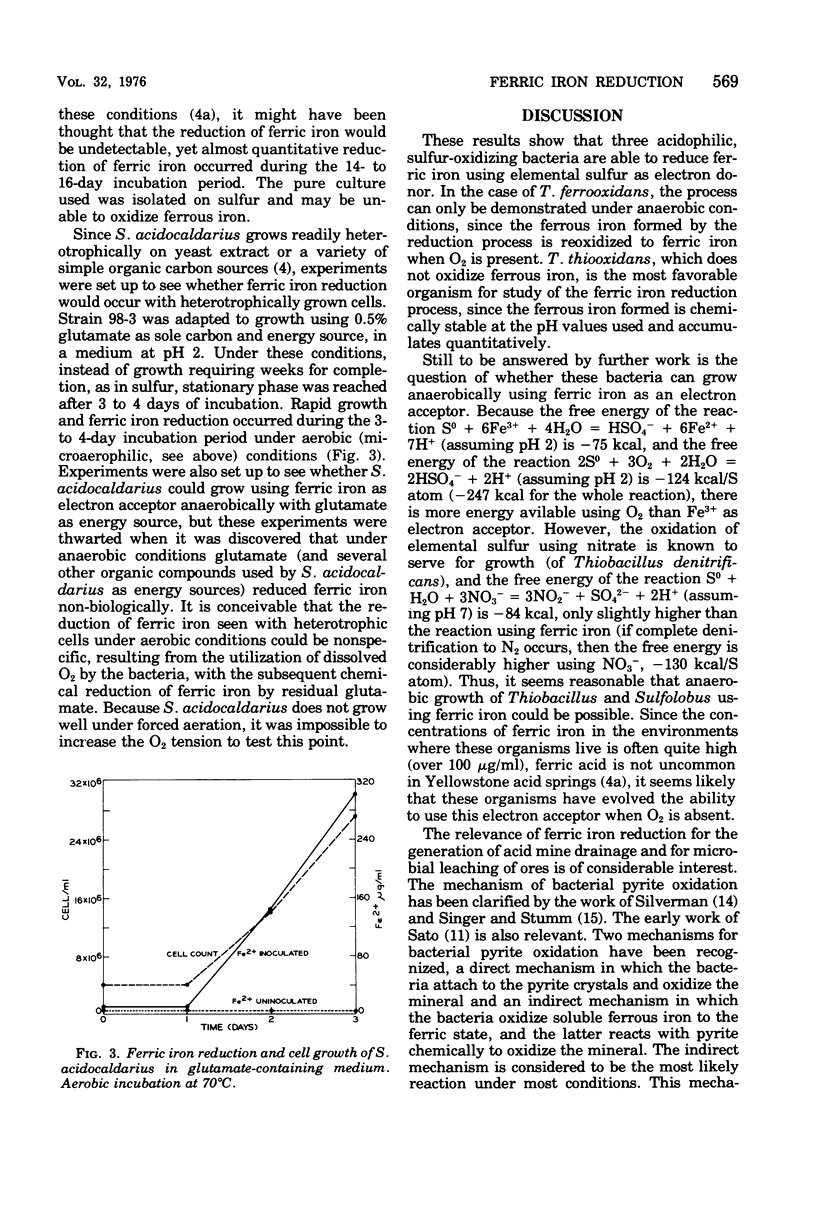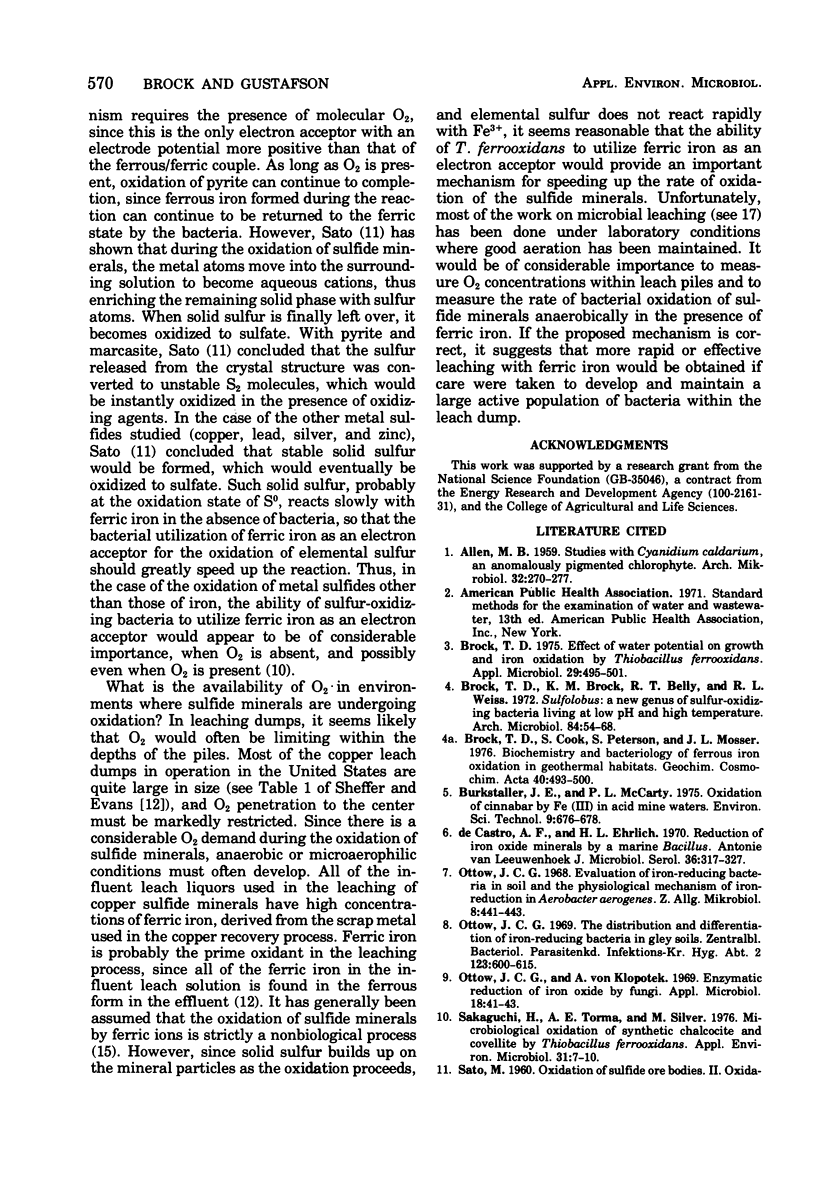Abstract
Acidophilic bacteria of the genera Thiobacillus and Sulfolobus are able to reduce ferric iron when growing on elemental sulfur as an energy source. It has been previously thought that ferric iron serves as a nonbiological oxidant in the formation of acid mine drainage and in the leaching of ores, but these results suggest that bacterial catalysis may play a significant role in the reactivity of ferric iron.
Full text
PDF




Selected References
These references are in PubMed. This may not be the complete list of references from this article.
- ALLEN M. B. Studies with Cyanidium caldarium, an anomalously pigmented chlorophyte. Arch Mikrobiol. 1959;32(3):270–277. doi: 10.1007/BF00409348. [DOI] [PubMed] [Google Scholar]
- Brock T. D., Brock K. M., Belly R. T., Weiss R. L. Sulfolobus: a new genus of sulfur-oxidizing bacteria living at low pH and high temperature. Arch Mikrobiol. 1972;84(1):54–68. doi: 10.1007/BF00408082. [DOI] [PubMed] [Google Scholar]
- Brock T. D. Effect of water potential on growth and iron oxidation by Thiobacillus ferrooxidans. Appl Microbiol. 1975 Apr;29(4):495–501. doi: 10.1128/am.29.4.495-501.1975. [DOI] [PMC free article] [PubMed] [Google Scholar]
- De Castro A. F., Ehrlich H. L. Reduction of iron oxide minerals by a marine Bacillus. Antonie Van Leeuwenhoek. 1970;36(3):317–327. doi: 10.1007/BF02069033. [DOI] [PubMed] [Google Scholar]
- Ottow J. C. Evaluation of iron-reducing bacteria in soil and the physiological mechanism of iron-reduction in Aerobacter aerogenes. Z Allg Mikrobiol. 1968;8(5):441–443. doi: 10.1002/jobm.3630080512. [DOI] [PubMed] [Google Scholar]
- Ottow J. C. The distribution and differentiation of iron-reducing bacteria in gley soils. Zentralbl Bakteriol Parasitenkd Infektionskr Hyg. 1969;123(6):600–615. [PubMed] [Google Scholar]
- Ottow J. C., Von Klopotek A. Enzymatic reduction of iron oxide by fungi. Appl Microbiol. 1969 Jul;18(1):41–43. doi: 10.1128/am.18.1.41-43.1969. [DOI] [PMC free article] [PubMed] [Google Scholar]
- Sakaguchi H., Torma A. E., Silver M. Microbiological oxidation of synthetic chalcocite and covellite by Thiobacillus ferrooxidans. Appl Environ Microbiol. 1976 Jan;31(1):7–10. doi: 10.1128/aem.31.1.7-10.1976. [DOI] [PMC free article] [PubMed] [Google Scholar]
- Shivvers D. W., Brock T. D. Oxidation of elemental sulfur by Sulfolobus acidocaldarius. J Bacteriol. 1973 May;114(2):706–710. doi: 10.1128/jb.114.2.706-710.1973. [DOI] [PMC free article] [PubMed] [Google Scholar]
- Silverman M. P. Mechanism of bacterial pyrite oxidation. J Bacteriol. 1967 Oct;94(4):1046–1051. doi: 10.1128/jb.94.4.1046-1051.1967. [DOI] [PMC free article] [PubMed] [Google Scholar]
- Singer P. C., Stumm W. Acidic mine drainage: the rate-determining step. Science. 1970 Feb 20;167(3921):1121–1123. doi: 10.1126/science.167.3921.1121. [DOI] [PubMed] [Google Scholar]


